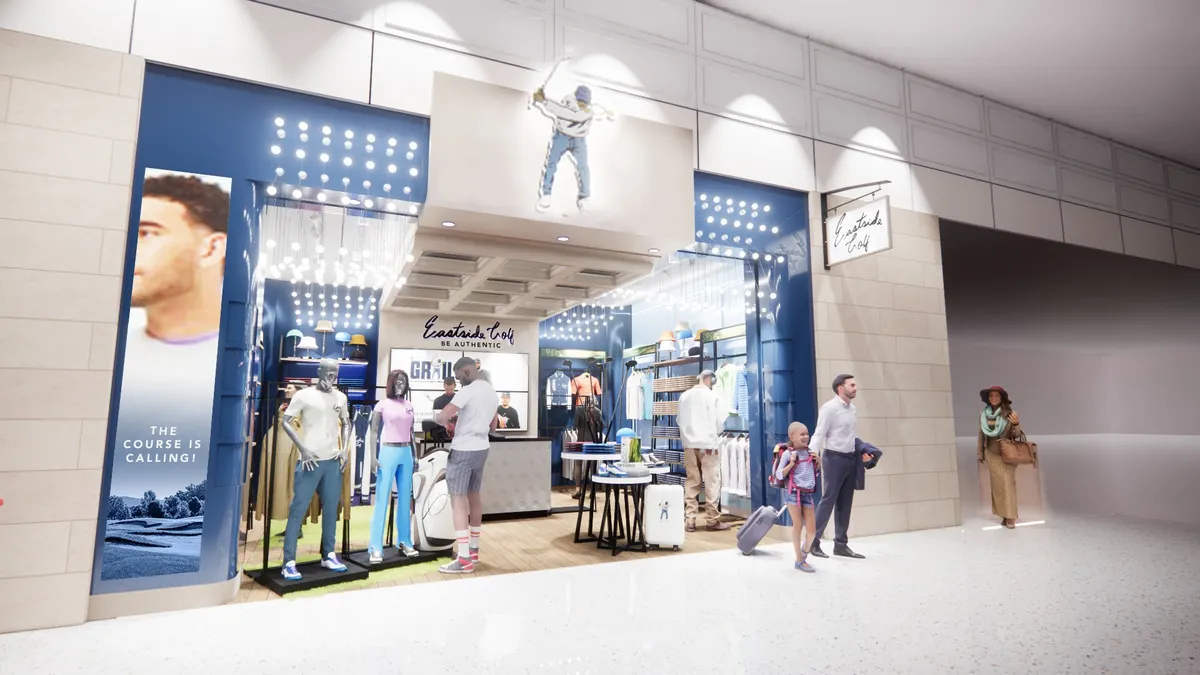ORLANDO, FL. — Purple CEO Rob DeMartini, who succeeded Joseph Megibow in December 2021, is ready for the mattress brand to grow up.
Speaking at the ICR conference on Monday, DeMartini said Purple grew very rapidly in its early days and “in some cases grew beyond the experience of that team.” Since taking over, DeMartini has worked to build out a more veteran leadership team, including hiring a new chief operating officer, an innovation leader, and a chief marketing officer. Purple is also looking for an executive to oversee its store fleet, which currently sits at 55 but could triple or quadruple over time, per DeMartini.
And it’s not just the executive team that needed a refresh.
“It’s time for the brand to mature and really start selling the health and wellness of a great night’s sleep. We did get great mileage out of some pretty quirky marketing early in our life, and it got the brand to be, as young as it is, to be relatively well-known — our brand recall is competitive with Tempur and Sleep Number — but what people don’t know is: why is it better,” DeMartini said. “So we’ve got to make the shift to start talking about consumer benefits.”
DeMartini outlined a growth path for the DTC mattress brand that includes launching more mattresses in January than the company has launched in its entire history. Purple is planning to grab more of the premium market with a Purple Luxe line of products, thanks to the acquisition of Intellibed in September. DeMartini noted that Intellibed was already using its technology, so Purple could either sue the company or acquire it.
“A $7,000 bed does not cost seven times more than a $1,000 bed to make, so everyone can benefit from that."

Rob DeMartini
CEO, Purple
Bringing Intellibed into the fold and rebranding it as Purple Luxe will allow Purple to offer mattresses at price points ranging from $1,000 to $7,500 and gives its wholesale partners the ability to upsell customers.
“This category needs to grow from trade-up. Everybody who’s going to sleep on a mattress already does and they replace it about every seven to 10 years. Accelerating purchase cycle — I guess that’s a noble ground — but I’m not sure I’m young enough to take on that strategy,” DeMartini said. “We’ve got to get our retailers to trade up. And it’s proven in the market: Tempur’s been doing this for years, they’re really, really good at it. And retailers want a similar alternative choice and we think we can be that.”
The other benefit of selling a more premium mattress offering is that it offers better margins to Purple.
“A $7,000 bed does not cost seven times more than a $1,000 bed to make, so everyone can benefit from that,” DeMartini said.
The tiered product structure, with some premium products in addition to more entry-level products, also serves as an incentive for wholesale partners to sell Purple products.
“[Wholesalers] didn’t carry us because they wanted to sell us, they carried us because they didn’t want to tell the person on the phone they didn’t have us,” DeMartini said of the brand’s previous relationship with wholesalers. “We’ve done a lot in the product structure to get us more money, to get them more money, so they not only want to stock us, they want to sell us.”
Product launches on the mattress side are the priority currently, but Purple’s future growth plans expand beyond mattresses. First, that means areas focused around the bed, like pillows and bed frames, but eventually it could include an expansion into “beyond the bed.”
“What else can we do in smart monitoring and smart sleep and places like that? I want to be careful not to put the cart before the horse — we have to get the mattress business right,” DeMartini said. “We think we’re headed in the right direction. But once we do, this is a pretty powerful brand name that can be more than just the mattress. It can be about wellness, sleeping better and all the things that that connects to.”
Purple isn’t the only one to see the wealth of opportunities outside of mattresses. Casper CEO Emilie Arel last year noted the brand’s strategy used to be about transforming itself into “the Nike of sleep,” but now the brand is backtracking. Arel in August walked back Casper’s ambitions outside of the mattress space — which have included smart nightlights, dog beds and CBD gummies — and instead said the company would focus on being a mattress retailer.
But in DeMartini’s view, bed-in-a-box brands don’t have much going for them anymore except for product.
“You talk about the bed-in-a-box guys and that was interesting when getting something delivered to your porch was innovative,” DeMartini said. “Distribution disruption is not a thing anymore because Amazon has reset the world’s expectations so you better have product differentiation.”
Purple is hoping its focus on more premium products will help get it there, but the journey isn’t without its challenges. Recent marketing updates that have made tracking and data collection more difficult have hit DTC brands particularly hard. Purple was one of the companies that struggled because of the changes, DeMartini said, and now the brand has to rethink its marketing strategy as well.
“If you even thought about us, we were going to find you and send you a message and get you to buy something,” DeMartini said of Purple’s old marketing strategy. “You just can’t do that anymore … We’re going back to marketing the way marketing was, where you can understand your consumer deeply and then find clever ways to talk to them that isn’t just stalking.”























